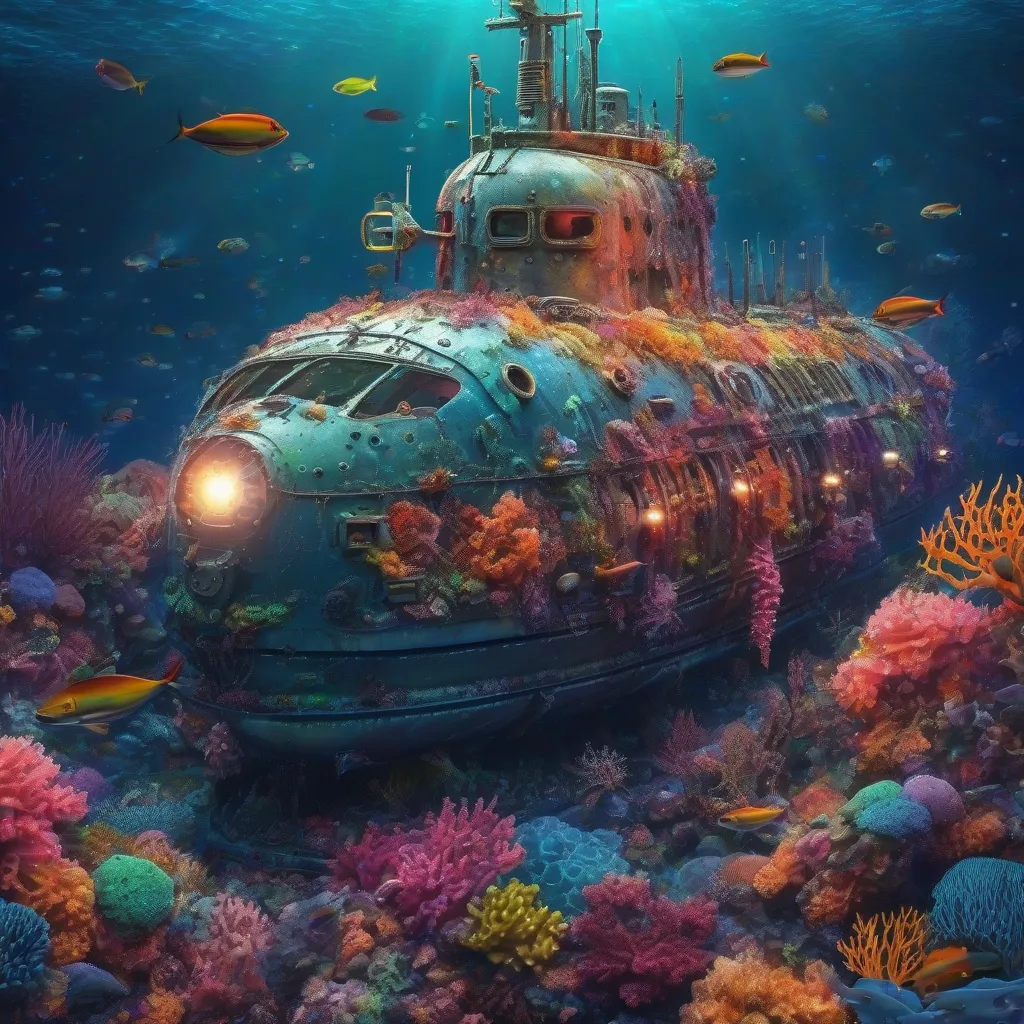Have you ever gazed out at the vast ocean and wondered what lies beneath the surface? The mysteries of the deep have captivated humans for centuries, and with the invention of the submarine, we’ve been able to explore further down than ever before. But just How Deep Can A Submarine Travel? Let’s dive in and discover the limits of these underwater vessels.
The Depth Limits of Submarines
The depth a submarine can reach depends on its design and purpose. There are two main types of submarines:
1. Military Submarines: These are designed for stealth and combat and generally operate at depths of around 1,500 feet (457 meters). However, their exact maximum depth is a closely guarded secret. Some experts believe certain military submarines, like the US Navy’s Seawolf class, could potentially dive to depths of 2,400 feet (730 meters) or even deeper.
2. Research Submarines: Built for scientific exploration, these submarines are designed to withstand immense pressure and can descend to incredible depths. For example, the Woods Hole Oceanographic Institution’s famous submersible, Alvin, can reach depths of 14,764 feet (4,500 meters). That’s almost 3 miles underwater!
So, why don’t all submarines just dive as deep as possible?
The answer lies in the concept of crush depth. This is the depth at which the immense water pressure outside the submarine would be strong enough to crush its hull. Every submarine is designed with a specific crush depth, and exceeding it would have disastrous consequences.
 Submarine Exploring Ocean Depths
Submarine Exploring Ocean Depths
Factors Influencing Submarine Depth
Several factors influence a submarine’s maximum operating depth:
- Hull Design and Material: The shape and strength of the hull, often made from high-tensile steel or titanium alloys, are crucial in withstanding pressure.
- Operating Depth vs. Test Depth: Submarines undergo rigorous testing to ensure they can safely handle their designated operating depths, which are always shallower than their tested maximum depths.
- Safety Margins: A significant safety margin is built into the design to account for unforeseen circumstances and ensure the safety of the crew.
Exploring the Ocean’s Depths: A Tale of Discovery
In 1960, the bathyscaphe Trieste, piloted by Jacques Piccard and Don Walsh, made history by descending to the deepest known point on Earth – the Challenger Deep in the Mariana Trench. This incredible feat saw them reach a staggering depth of approximately 35,814 feet (10,916 meters). Imagine the pressure at that depth – over 8 tons per square inch!
 Deep Sea Creatures in Mariana Trench
Deep Sea Creatures in Mariana Trench
This extraordinary journey not only pushed the boundaries of human exploration but also provided invaluable scientific data about the ocean’s deepest regions. Today, research submarines continue to explore the ocean depths, uncovering new species, geological formations, and even potential resources.
FAQs about Submarine Depth
1. What happens if a submarine goes too deep?
Exceeding the crush depth would lead to catastrophic hull failure, resulting in the submarine imploding under the immense pressure.
2. Are there submarines that can reach the bottom of the Mariana Trench today?
While the Trieste’s record still stands, modern research submersibles like the Limiting Factor have also successfully reached the Challenger Deep, showcasing advancements in deep-sea technology.
3. How do submarines manage the increasing pressure at depth?
Submarines have thick, strong hulls and are designed to be watertight. Internal air pressure is regulated to remain constant, ensuring the crew’s safety.
Travelcar.edu.vn: Your Gateway to Adventure
Want to learn more about the wonders of the ocean or explore other fascinating travel destinations? Visit TRAVELCAR.edu.vn for travel tips, destination guides, and inspiration for your next adventure!
Exploring the depths of our oceans allows us to glimpse a world unlike any other. While the crush depth limits how deep submarines can travel, ongoing advancements in technology continue to push the boundaries of exploration, revealing the awe-inspiring mysteries hidden beneath the waves.